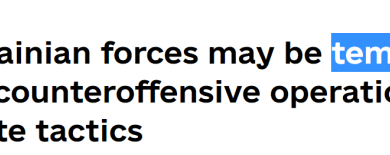
Former Crypto Traders Assess Shifting Trends in the Market
Former crypto traders assess shifting trends in cryptocurrency market, a topic that’s become increasingly relevant as the digital asset landscape continues to evolve at a rapid pace. This shift in the market isn’t just about the price of Bitcoin, but also about the changing dynamics of the entire crypto ecosystem.
The crypto market is no longer the Wild West it once was. Regulation is increasing, institutional investment is pouring in, and the adoption of cryptocurrencies is expanding globally. All of these factors are shaping the future of crypto, and it’s crucial for investors to understand the new landscape.
The Changing Landscape of Cryptocurrency: Former Crypto Traders Assess Shifting Trends In Cryptocurrency Market

The cryptocurrency market has undergone a significant transformation in recent years, marked by both periods of explosive growth and periods of sharp decline. This dynamic evolution has been shaped by a confluence of factors, including regulatory changes, macroeconomic trends, and shifts in investor sentiment.
Understanding these forces is crucial for navigating the complexities of the crypto landscape and making informed investment decisions.
Regulatory Developments
Regulatory clarity is a key driver of market stability and investor confidence. In recent years, regulators around the world have taken steps to establish frameworks for the cryptocurrency industry. This has led to increased scrutiny of exchanges, stablecoins, and decentralized finance (DeFi) protocols.
While some regulations have aimed to protect investors and prevent illicit activities, others have been seen as stifling innovation and hindering the growth of the industry.
- The United States Securities and Exchange Commission (SEC) has taken a more aggressive stance towards cryptocurrencies, classifying many tokens as securities and subjecting them to stringent regulations. This has led to increased uncertainty for projects and investors.
- In contrast, the European Union has adopted a more comprehensive approach, enacting the Markets in Crypto-Assets (MiCA) regulation, which aims to create a harmonized regulatory framework across the bloc.
Macroeconomic Trends
The cryptocurrency market is not immune to macroeconomic factors. Global economic conditions, interest rates, and inflation can have a significant impact on investor appetite for risk assets like cryptocurrencies. During periods of economic uncertainty or rising interest rates, investors tend to move towards more conservative investments, which can lead to a decline in crypto prices.
- The recent rise in interest rates by central banks globally has led to a decrease in liquidity and increased borrowing costs, making it more expensive for investors to hold cryptocurrencies.
- The ongoing war in Ukraine and the global energy crisis have also contributed to macroeconomic uncertainty, which has impacted investor sentiment towards cryptocurrencies.
Shifting Investor Sentiment
Investor sentiment plays a significant role in shaping market trends. During periods of bullish sentiment, investors are more likely to invest in cryptocurrencies, driving prices higher. Conversely, bearish sentiment can lead to selling pressure and price declines.
- The emergence of institutional investors, such as hedge funds and pension funds, has increased the institutionalization of the cryptocurrency market. This has brought more capital and sophistication to the industry, but also increased the influence of traditional financial market trends.
- The growing adoption of cryptocurrencies by retail investors has also contributed to market volatility. Retail investors tend to be more susceptible to hype and speculation, which can lead to price bubbles and subsequent crashes.
Comparison with Past Market Conditions, Former crypto traders assess shifting trends in cryptocurrency market
The current cryptocurrency market is vastly different from the early days of Bitcoin. While the market was once dominated by speculation and a lack of regulatory clarity, it has become more institutionalized and regulated.
- The emergence of a wide range of cryptocurrencies beyond Bitcoin, including Ethereum, Solana, and Cardano, has increased the diversity and complexity of the market.
- The development of DeFi protocols and the growth of the metaverse have created new opportunities and challenges for investors.
Former crypto traders, disillusioned by the volatility of the digital market, are now looking for more stable investments. Many are turning their attention to the world of soft commodities, where the demand for essential goods like coffee, cocoa, cotton, and sugar remains consistent.
It’s a world of tangible assets, unlike the ephemeral nature of crypto, and it’s worth exploring the opportunities in this sector, as detailed in this informative blog post: soft commodities trading know the opportunities in coffee cocoa cotton and sugar.
This shift in focus highlights the evolving landscape of investment strategies, with former crypto traders seeking a more grounded approach to wealth building.
Former crypto traders are closely watching the shifting trends in the cryptocurrency market, particularly the impact of macroeconomic factors. Understanding the Federal Reserve’s stance on monetary policy is crucial, as it can significantly influence the direction of the market. For insights into the Fed’s latest moves and their potential implications, check out federal reserve focus a weekly update on economic developments.
By staying informed about these developments, traders can better navigate the volatility and capitalize on emerging opportunities within the crypto space.
It’s fascinating to see how former crypto traders are navigating the shifting landscape of the cryptocurrency market. They’re adapting to new regulations, fluctuating prices, and the emergence of innovative technologies. Meanwhile, the news cycle is dominated by stories like the recent decision by US Republican presidential candidate Vivek Ramaswamy to join TikTok amid controversy, which raises questions about the platform’s role in politics and its potential influence on voters.
Ultimately, both the crypto market and the political landscape are undergoing rapid changes, making it a time of both uncertainty and opportunity.






